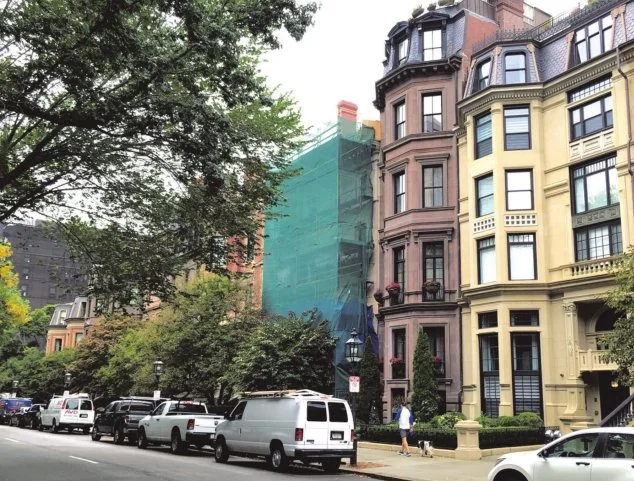Trying to keep up grand appearances at years roll by
In Boston’s Back Bay neighborhood, an old house is draped while being repaired.
Old building materials, new insulation standards and consistently wet summers can spell trouble for many of Boston's historic homes, contractors and experts said, so property owners need to be on the lookout now for warning signs.
Neighborhoods like the Back Bay, Beacon Hill and South End are known for historic brownstones and rowhouses, but buildings from a century ago weren't constructed according to current codes.
In particular, lintels which support walls above doors and windows, may have been made with steel, but what was state-ofthe-art then is woefully out of date now, according to John Holland of Holland & Co., who has decades of construction and rehab experience.
"When steel lintels were introduced in the turn of the century, they were new material, but they weren't galvanized," Holland said, noting that kind of metal is susceptible to rust and water damage, and that can lead to significant repairs as water freezes and expands over time, damaging stone, and lintels.
To read the whole article, please hit this link.
View (1858) from the Massachusetts State House westward along the Mill Dam (now Beacon Street), which separated Back Bay (left) from the Charles River. The Mill Dam and the Cross Dam (in distance is the modern Massachusetts Avenue-Kenmore Square area, with mills barely visible near juncture with the Mill Dam). They were part of an attempt to derive power from tides. Trees along north-south waterline represent western boundary (now Arlington Street) of the Boston Public Garden.
The Back Bay was built on land reclaimed from the Charles River basin. Construction began in 1859, as the demand for luxury housing exceeded the availability in the city at the time, and the area was fully built by around 1900. It remains one of Boston’s richest neighborhoods

